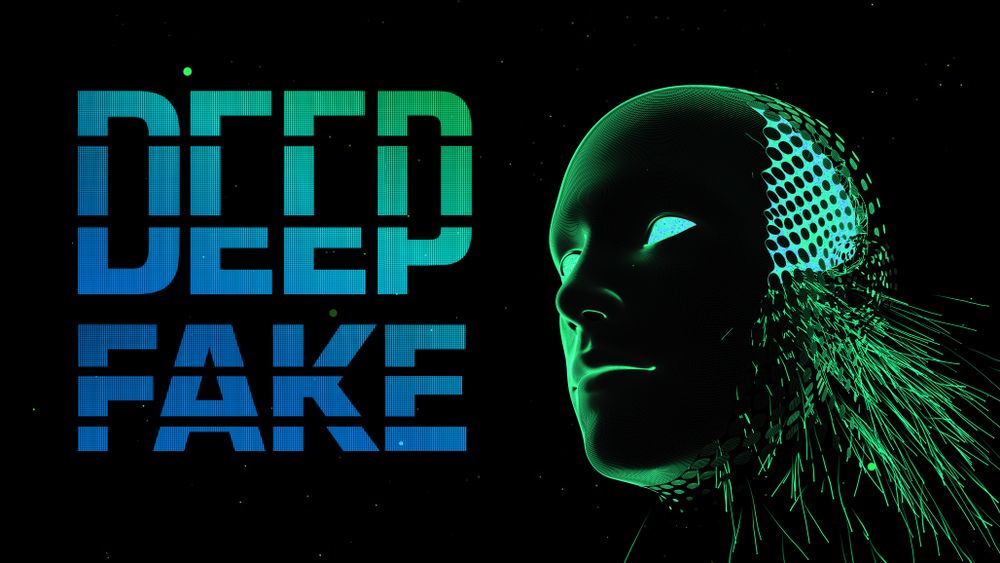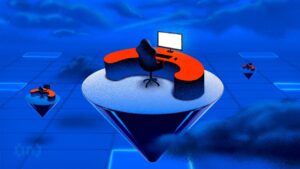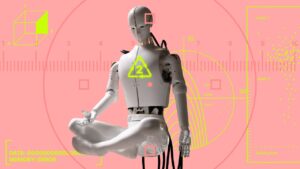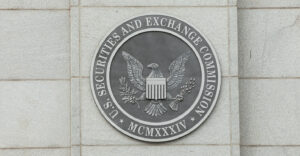Artificial Intelligence & Human Essence: Striking the Balance or Toppling It?

Artificial Intelligence’s (AI’s) rapid integration into our lives, from the workplace to our homes, has become an omnipresent force. Yet, this force raises profound questions about the essence of our identities and where we might stand in a world dominated by AI.
The exponential growth of AI signifies more than just a technological advancement. While presenting answers to long-standing problems, AI intertwines deeply with the foundations of human identity, reality, and morality.
AI’s role in defining human identity
Artificial Intelligence, in its unstoppable surge, has intricately woven into the fabric of our daily lives. Beyond its impressive computational abilities, the influence of AI on the human psyche and its implications for our identities are topics that warrant deep introspection.
A deep dive into identity transformation
For many, professions serve as more than a means of livelihood – they’re profound anchors of personal identity. Take a moment and reflect on the number of times an introduction starts with one’s job. Essentially, what we do often defines a part of who we are.
Now, introduce artificial intelligence to this narrative. With its capability to perform tasks, both mundane and complex, faster and often more accurately than humans, the threat it poses is not just about unemployment or job displacement. It’s fundamentally deeper.
Dr. Ali Fenwick, renowned for his insights on behavioral science and its interplay with technology, notably remarked, “AI doesn’t just replace your job; it reshapes who you are psychologically.” This powerful observation raises pivotal questions about our evolving identities in an age of rapid AI integration.
Unraveling the psychological transformation
So, what does it mean when Dr. Fenwick suggests that AI reshapes who we are psychologically?
Shift in value perception: In a world where machines can mimic or outperform human tasks, what we consider as ‘valuable skills’ may undergo a shift. Tasks that were once considered complex and reserved for skilled professionals might become commonplace. This can lead to a potential crisis of self-worth among individuals whose skills are replicated by artificial intelligence.
Redefining creativity: In the domain of arts, where human emotion and creativity are believed to be irreplaceable, AI has started making inroads. We already have AI composing music, writing scripts, and mimicking actors. If a machine can emulate human emotion on screen or in a melody, what does that imply about the uniqueness of human creativity? It challenges the foundational belief of art being the pure expression of human emotion and experience.
Artificial intelligence’s trajectory: From helper to ruler?
The narrative of artificial intelligence has long been punctuated by the oscillating dynamics between humanity and machines. Initially envisioned as tools to streamline tasks, the evolution of AI has begun steering us towards a future where they might not just be passive tools, but active participants, or even leaders in the world order. But what factors are shaping this transition, and how are visionaries in the tech sphere responding?
Understanding the artificial intelligence landscape
At the forefront of our AI experience today is what experts term ‘Weak AI.’ These are systems specifically designed for single-task jobs. Siri, for instance, is adept at understanding and processing voice commands but cannot outthink or strategize beyond its coded capabilities.
However, Dr. Fenwick’s insights shed light on an essential facet: the pace of AI evolution is not linear but exponential. Machines are swiftly transitioning from just performing tasks to potentially understanding and innovating beyond human comprehension.
Echoes of caution from tech pioneers
Elon Musk, among other tech magnates, has frequently voiced concerns over unregulated AI advancements. But why this apprehension? The crux lies not just in the potential of AI taking jobs but in the possibility of reshaping societal norms, ethics, and power dynamics.
Driving these concerns are several factors:
Technological leapfrogging: AI systems are becoming smarter and more autonomous with every iteration. The jump from ‘Weak AI’ to ‘General AI’ (machines that can perform any intellectual task a human being can) seems inevitable. Beyond that, the specter of ‘Superintelligent AI’ (surpassing human intellect entirely) looms.
Moral ambiguity: AI’s decisions, as they become more autonomous, will be rooted in their programming. But who decides what’s ethical or right? The challenge of encoding morality, especially in a diverse global context, is immense.
A world relying on machines: As AI becomes more embedded in our infrastructures, there’s a genuine risk of over-reliance. This could lead to diminished human innovation and problem-solving, amplifying the role and power of AI.
The deepfake quagmire: Erasing reality’s boundaries
In our advanced digital era, tools like deepfakes increasingly blur reality and fiction. Deepfake technology, both innovative and divisive, reshapes our understanding of truth, leading to ethical and tangible challenges.

Understanding deepfakes
Deepfakes employ artificial neural networks to overlay images and videos onto original media. The outcome? Impressively real yet wholly fabricated content, often indistinguishable from its source.
Deepfake impacts
Dr. Fenwick highlights the core issue: the rising challenge of differentiating real content from Deepfakes. This technology’s spread yields several problems:
Misinformation: Deepfakes can heighten ‘fake news,’ distorting public perception with manipulated evidence.
Personal risks: Using minimal media, Deepfakes can mimic anyone, risking blackmail or identity compromises.
Trust erosion: As Deepfakes spread, trust in once-solid video evidence wanes, affecting journalism and legal systems alike.
Challenges of detection
With Deepfakes, seeing isn’t always believing. Separating reality from fiction is pivotal. While AI tools to detect Deepfakes emerge, it’s a continuous cat-and-mouse game. As Deepfakes advance, so must our detection methods.
Conclusively, Deepfakes remind us of technology’s double-edged nature. While fostering creative avenues, they demand increased scrutiny and critical analysis in today’s digital world. Promoting a well-informed public, armed with the right tools and knowledge, becomes crucial.
Forging a future of collaboration, not supplantation
However, the artificial intelligence narrative need not be solely grim. A shift in perception, viewing AI as a collaborative ally rather than a replacement, can pave the way for harmonious coexistence. Dr. Fenwick optimistically foresees a brighter future: “With judicious decisions, AI can catalyze an age of prosperity and well-being.”
The larger conversation around AI isn’t solely fixated on algorithms and codes. It’s a deeply existential dialogue demanding collective introspection, deliberation, and proactive action. The choices made today will resonate in the melodies of tomorrow, deciding if AI complements the human symphony or becomes a discordant note.
“In the AI-driven future, recognizing and preserving the essence of humanity will be paramount.”
Concluding, the fusion of artificial intelligence into society warrants a profound reflection on its broader implications. While AI holds the potential to redefine our societal fabric, it simultaneously poses existential challenges. The balance lies in harnessing AI’s benefits while safeguarding humanity’s essence.
Disclaimer
In compliance with the Trust Project guidelines, this opinion article presents the author’s perspective and may not necessarily reflect the views of BeInCrypto. BeInCrypto remains committed to transparent reporting and upholding the highest standards of journalism. Readers are advised to verify information independently and consult with a professional before making decisions based on this content.















